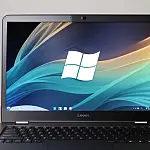Tips and Tricks for Customizing Your Android PhoneWant to make your Android phone truly unique? Discover the best tips and tricks for customizing your device to reflect your personal style and preferences.
Are you trying to give your Android phone a customised look? You may personalise your device to fit your tastes and style with a few easy tips and tricks. Let's look at the best methods to personalise your Android device, from altering the background to creating unique app icons.
Change Your Wallpaper and Theme
Changing the wallpaper and theme on your Android phone is one of the quickest ways to personalise it. A range of pre-installed wallpapers are available to choose from, or you can use your images. You can also download several themes from the Google Play Store to alter the appearance and feel of your device. Changing the wallpaper and theme on your Android phone is a great way to make it uniquely yours, regardless of your preference for a minimalist design or a bright and colourful theme.
To change the wallpaper on an Android device, you can follow these steps:
Method 1 - Using the Android Settings App
- Open your device's "Settings" app. You can typically find it in your app drawer or by swiping down from the top of the screen and tapping the gear icon in the notification panel.
- Scroll down and look for the "Display" or "Display & Sound" option. The exact location may vary depending on your Android version and device manufacturer.
- In the "Display" or "Display & Sound" section, find and tap "Wallpaper."
- You may see options for "Home screen" and "Lock screen." Select the one you want to change (or both).
- You can choose from various wallpaper sources, such as "Gallery," "Live wallpapers," "Wallpapers," or "My Photos." Tap the source you want to use.
- Browse and select the wallpaper you want to set. You can also crop or adjust the image if necessary.
- Once you've made your selections, tap "Set wallpaper" or a similar option.
Method 2 - Using the Home Screen
- Long-press (tap and hold) on an empty area of your home screen. This action may differ slightly depending on your device and home screen launcher.
- A menu should appear, allowing you to select "Wallpapers," "Wallpaper settings," or a similar option.
- Choose the location for your wallpaper source, such as "Gallery," "Live wallpapers," or "Wallpapers."
- Browse and select the wallpaper you want to use.
- Adjust the cropping or scaling as needed.
- Tap "Set wallpaper" or an equivalent option.
The exact steps may vary slightly depending on your Android version and the device manufacturer's customizations. These methods should work for most Android devices, whether they use a stock Android interface or have a custom skin from manufacturers like Samsung, LG, or Huawei.
Customize your Home Screen Layout
Changing the layout of your home screen is another method to personalise your Android phone. You can rearrange app icons, make folders, and even customise your home screen using widgets. This lets you arrange your data and apps whatever it's most comfortable for you. To quickly check the forecast, you can add a weather widget or make a folder for your most often-used apps. You may increase the functionality and personalization of your Android phone by changing the layout of the home screen.
Add Widgets for Quick Access to Information

You can customise your home screen with widgets that show the current weather, upcoming activities on your calendar, news headlines, and more. Just long-press on an empty area of your home screen, then choose "Widgets" from the menu that appears. You can then browse the various widgets and select the ones you wish to include. The widgets can be resized and rearranged once added to suit your preferred arrangement. It's simple to keep informed and access information with these widgets on your home screen—you don't need to open different apps.
Personalize your Notification Settings
Changing the notification settings on your Android phone is one of the simplest ways to customise it. This gives you control over which apps can send you alerts, how they show up on your screen, and even how each one sounds or vibrates. Navigate to the "Notifications" or "Sound & notification" option in the Settings menu on your phone to view your notification settings. From there, you can investigate the many choices and modify them to suit your tastes. For instance, you may decide whether to get notifications audibly, have them show up as pop-ups or banners, or even assign distinct notification tones to various apps.
Install a Custom Launcher for More Customization Options
Installing a custom launcher on your Android phone might provide you with even more customization possibilities. In essence, a launcher is an interface that manages the appearance and functionality of your phone's home screen, app drawer, and other user interface elements. You can alter your device's appearance and feel entirely by installing a custom launcher. The Google Play Store offers a wide variety of customised launchers, each with its own set of features and customization choices. Apex Launcher, Action Launcher, and Nova Launcher are a few popular choices. After installing a customised launcher, you can alter every aspect of the application, including the animation effects and transition styles, as well as the home screen layout and app icons.









